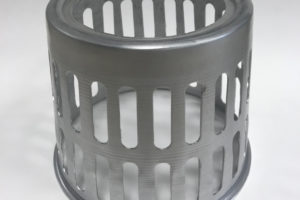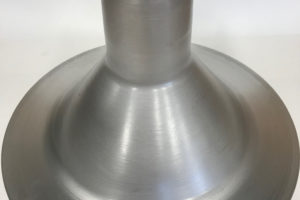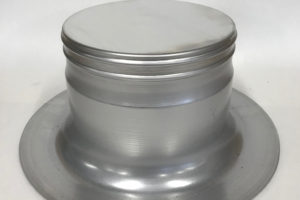Roofing
An effective roof provides a range of functions, protecting commercial & industrial structures from inclement weather and retaining temperate air. However, a quality roofing system goes well beyond, sheathing, and rafters.
Metal Spinning Roof Drains & Vent Pipe Flashing vs. Multiple Welded Pieces
Automated metal spinning from a certified metal spinning supplier is indispensable for producing roofing parts such as roof drains and roof vent pipe flashing, as it is more cost effective than multi-part drains. It is also more versatile, less time consuming, and design changes are easily accommodated.
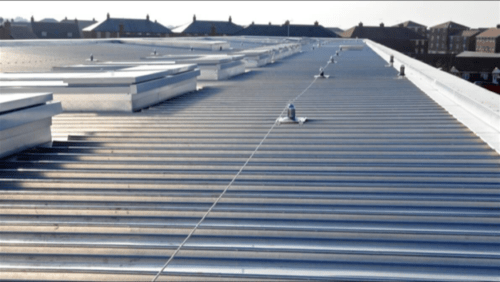 Metal Spinning roof drains and vent pipe flashing also prevents any possibility of leakage from damage caused by inclement weather or improper welding of multiple pieces.
Metal Spinning roof drains and vent pipe flashing also prevents any possibility of leakage from damage caused by inclement weather or improper welding of multiple pieces.
The automated metal spinning process also allows the cylindrical roofing component to perform in all conditions and bears no welding line, ensuring optimal strength and appearance.
This low-cost process efficiently allows you to create large volumes of cylindrical roofing components with minimal waste, and its tooling’s innovative design allows you to make changes to the production process at minimal expense.
Roof Drains at Metal Craft Spinning and Stamping
Over time a flat roof may collect too much water which will cause flooding. You can easily prevent this by installing a roof drain. Roof drains are used to convey stormwater from the roof to the retaining area or the drainage sewer. Stormwater is generally received from the roof drains and moved to one of three places:
- Your city’s sewer system
- A retention pond or reservoir
- Left on the ground to naturally evaporate
Automated metal spinning can create roofing drains with a wide range of diameters as well, which is why manufacturers use metal spinning to build roofing products for all shapes, materials, and applications.
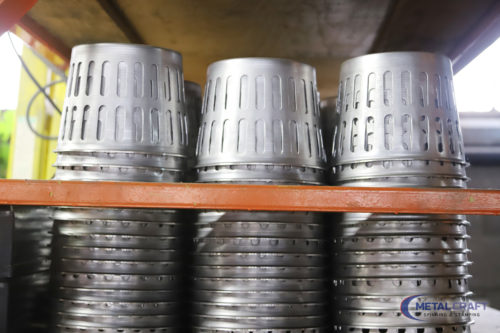 7 Steps to Selecting a Metal Spun Roof Drain
7 Steps to Selecting a Metal Spun Roof Drain
There are several steps to take when considering which type of metal spun roof drain will be most effective for your roof. Here are seven questions to ask yourself when selecting the optimal metal spun roof drains.
- What type of roof construction do I have? This is a very basic but important consideration. For example, roofs overlaid with tar or gravel will require a different drainage system than roofs with exposed metal or a membrane.
- What is the maximum volume of expected rainfall? This question takes into account factors such as typical weather patterns for your area and the specific design of your roof.
- What is the desired rate of drainage? You must ensure that your roof can adequately drain water from rain, snow and ice that it can support the weight of accumulated water in the meantime. If your climate sees a higher amount of annual rainfall than most regions, this must be considered when selecting the size and quantity of your roof drain.
- What are the safety overflow requirements? Roof drainage systems with internal or piped drains must also have enough overflow drains in place to handle excessive water volume. This ensures that in the event of a blockage or some other unusual situation, there will still be an available channel for adequate water drainage.
- What is the roof load capacity? This is an important calculation in the event of water, snow, or ice accumulation on the roof.
- What are the optimal roof drain locations? This question encourages you to think about the specific features on your roof that may require flashing for proper drainage. For instance, the edges of skylights and valleys may need to be overlaid with roof flashing for optimal drainage.
- What size roof drain do I want/need? This is both a practical and aesthetic question since the size of your roof flashing will have a direct bearing on drainage rate.
How to Install a Metal Spun Roof Drain
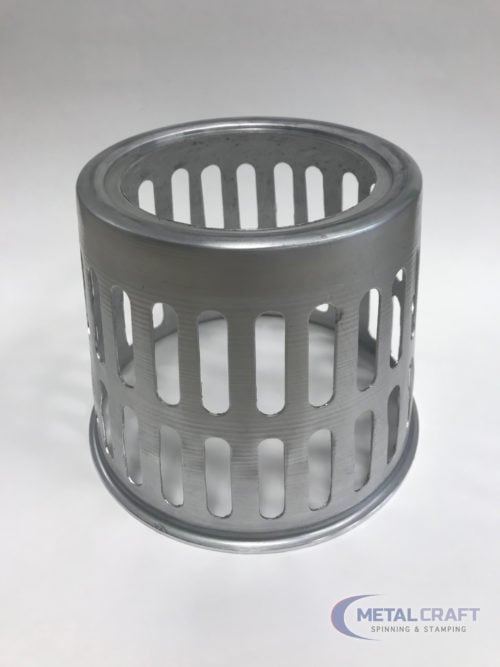 Installing a metal spun roof drain is not difficult, so long as you have the right tools and materials available to you. Here are a few common steps to follow if you want to install a commercial or industrial roof drain.
Installing a metal spun roof drain is not difficult, so long as you have the right tools and materials available to you. Here are a few common steps to follow if you want to install a commercial or industrial roof drain.
*While we as metal spinning suppliers find these to be a few helpful steps, we also advise that you consult with a roofing installation professional prior to taking on the project.
1) Sitting your Roof Drain
You should be aware of where you want to place the roof drain on your commercial roof. You can basically place it anywhere you like, however it should be in the lowest point of the roof to work best. Roof drains can be located anywhere from every 20-50 feet across the surface of the roof, or generally toward the middle as well.
2) Testing the Roof Drain
Drench the area of your roof to ensure that all the water is drained away from the surface of the roof without it settling or pooling anywhere. Any pooling water could weaken your roof causing serious structural damage.
Roof Vent Pipe Flashing at Metal Craft Spinning and Stamping
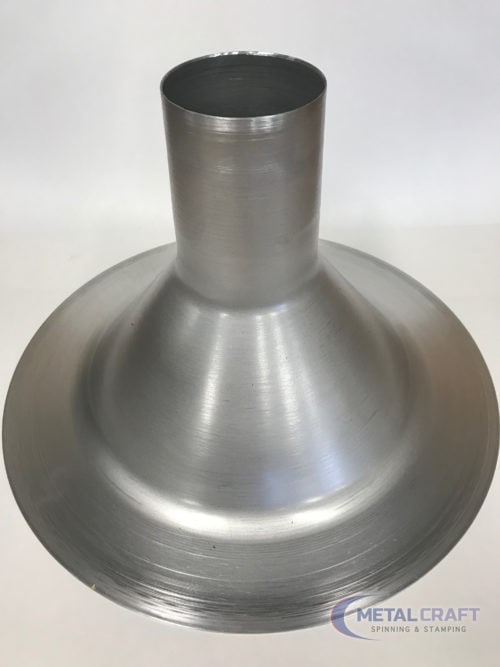 Roof vent pipe flashing performs an essential function for any industrial or commercial building. You’ll notice them on just about every commercial or industrial roof as vertical pipes sticking out of the superstructure.
Roof vent pipe flashing performs an essential function for any industrial or commercial building. You’ll notice them on just about every commercial or industrial roof as vertical pipes sticking out of the superstructure.
They act to shield vent pipes in the plumbing system, supplying fresh air to each plumbing fixture in the structure. Vent pipes serve several important functions. For example:
- Roof vents help prevent sewer gases from accumulating within a structure.
- Vents help water move properly through the drainage system.
- Vent pipes also prevent the “siphon effect” from occurring during rapid drainage, which could lead to water escaping from drain traps.
When roof vents are blocked or obstructed, this can result in:
- slow flowing drains,
- standing water, and
- sewage odors.
Poorly maintained roof vents may also result in water leakage into the structure. After all, vent pipes come out of holes in the roof, and if those holes are not airtight, then water leakage and subsequent water damage will inevitably occur.
Automated metal spinning of roof vent pipe flashing helps to prevent water leakage around roof vents. Roof flashing waterproofs vulnerable areas on a sloped industrial or commercial roof.
How Does Roof Vent Flashing Work?
The installation of vent pipe flashing is straightforward.
The metal spun flashing comes in a cone-shaped application with a flange at the base. The inside of the conical part is hollow, which allows the installer to slip the flashing over the vent pipe. A rubber compression fitting keeps the conical section tight around the vent, ensuring that water can’t penetrate it.
Once the metal spun flashing has been fitted around the vent pipe, it is installed underneath the roofing shingles on the top and side edges. The front edge of the base flange is left exposed. This funnels water out and away from the vent pipe, preventing water leakage or accumulation.
Custom Roof Drain Solutions at Metal Craft Spinning & Stamping
Roof vent pipe flashing and roof drains formed by automated metal spinning can be made of several different types of materials, but aluminum roof drains are by far the most common option.
It is relatively inexpensive but provides solid protection against leakage, and the material allows for inexpensive, high-volume production with shorter turnaround time for your next project, no matter what your required volume.
Metal Craft Spinning & Stamping has been a premier metal spinning supplier for roof drains and vent pipe flashing for commercial and industrial markets to protect roof vent pipes since 1969, and now employs two robots fully dedicated to the automated production of these components.
This allows for quick turnaround times and high-volume orders with virtually zero deficiency kick-back. For 50 years, we have offered our clients high-quality products and premier customer service.
If you’d like to learn more about our metal spinning roof drain solutions, please contact us or request a quote today. Our team of experts will be happy to assist you.
